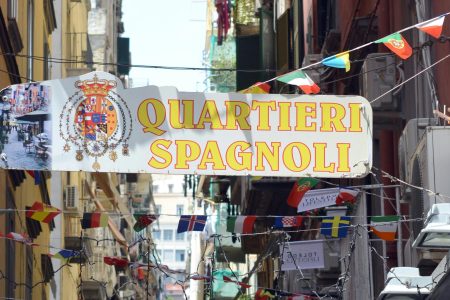Table of Contents
The Rest of Nothing is a historical novel by the Neapolitan writer and journalist Enzo Striano. Given to print in the 1980s, it recounts the life of Eleonora de Fonseca Pimentel during the period of the Neapolitan Revolution of 1799.
Born in Naples in 1927, Striano as a young man worked for many left-wing newspapers, including l'Avanti and l'Unità. Between journalism and prose, he published several novels in the 1970s, but real success came only in 1986 with The rest of nothing. Unfortunately, he will not be able to enjoy it for long as he will die in 1987.
The plot of the novel
The 11-year-old Eleonora de Fonseca Pimentel arrives in Naples together with her Portuguese family. They were forced to leave Rome, the place where little Lenor was born, because of difficult relations between Portugal and the Papal States.
You might be interested
Walking tour among the wonders of the Sanità district
per person Book
Walking tour in the Spanish Quarters to breathe in the magic of Naples
per person Book
Visit Naples in half a day: guided tour from Piazza Dante to Piazza del Gesù
per person Book
Private guided tour of the Royal Palace of Naples
per person Book
After describing the journey through the Pontine marshes, the story tells of Lenor's adolescence and her marriage to her husband Tria, from whom she divorces after the death of their son. She later comes into contact with the Neapolitan intellectual circles of the time.
Lenor then began to breathe the revolutionary air that would later lead to the overthrow of Ferdinand IV's throne and the creation of the Neapolitan Republic in 1799, of which she is a supporter through the editorship of the newspaper Monitore Napoletano. To counter the fledgling republic, the army of the Holy See commanded by Fabrizio Ruffo intervened.
With the defeat of the revolutionaries and the restoration of Bourbon power, all supporters of the Neapolitan Republic are sentenced to death. Among them will be Lenor, executed in Market Square in August 1799. She was denied the noble privilege of decapitation, despite the fact that her Portuguese noble title had been recognized for years.
Illuminating prose in a difficult historical context
The author takes us inside the political and social context as the Neapolitan Revolution about which we do not know much. In this case, the revolution is told from a woman's point of view, that is, through the eyes of a determined and cultured woman who is carried away by events.
Intellectuals like Eleonora de Fonseca Pimentel facilitated the advent of the Neapolitan Republic, an exciting happening for many, but also a rather ephemeral and transitory one. As a journalist, Striano narrated his novel as if it were a chronicle, yet maintaining a smooth and flowing style. On the other hand, the main character was also a journalist.
We thus have a portrait of late 18th-century Naples in which the colorful alleyways, the variety of dialects according to the area of origin, the aroma of typical dishes and flamboyant clothing are recounted, oscillating between Bourbon splendor and the extreme misery of the people. Lenor is thus a modern heroine and feminist ante litteram, whose only weapon to fight back is culture.
She does not approve of the superstitions typical of Neapolitans, but believes in a civic education that can lead to an insurrection capable of overthrowing the tyranny that was suffocating Naples at that time. Simply put, Lenor has faith in a more equitable and just society where everyone can have the right to education and in which authoritarianism will be replaced by democracy. All these sentiments will later give her the strength to continue living after the loss of her beloved son.





0 Comments